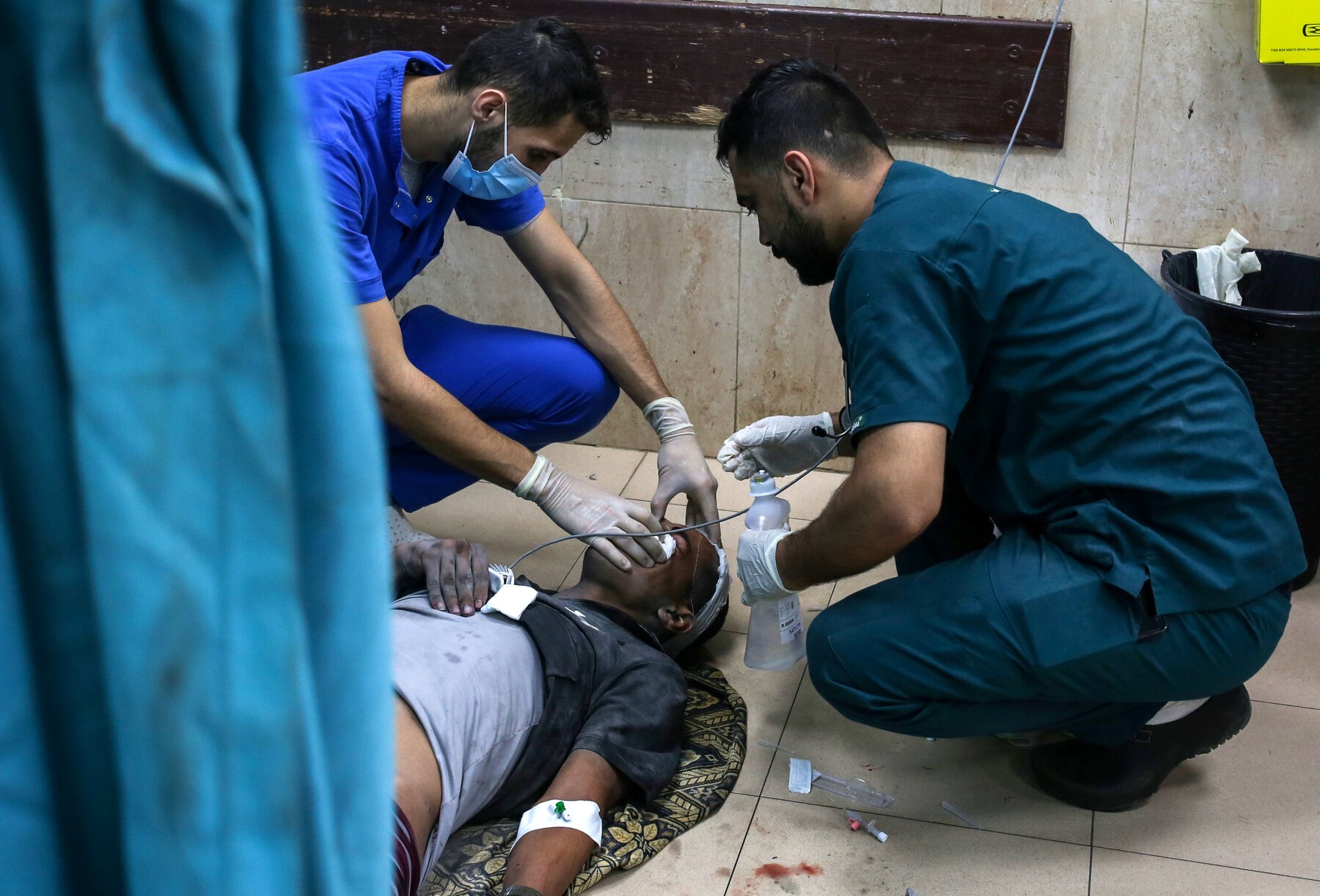*By: Sayyed Muhammad-Baqer Husseini Motlagh*
AhlulBayt News Agency (ABNA): The situation in Gaza has reached a critical juncture as Human Rights Watch (HRW) presents evidence of repeated, apparently unlawful attacks on medical facilities, personnel, and transport by the Israeli military. These actions have severely compromised Gaza's healthcare system, resulting in a grave healthcare crisis that demands swift international intervention.
As the conflict in Gaza escalates, the healthcare system faces unprecedented challenges. The latest findings from HRW highlight the alarming frequency of Israeli attacks on medical facilities, staff, and ambulances. These actions have not only strained an already fragile healthcare system but have also raised concerns of potential war crimes.
Introduction
The right to health is a fundamental human right recognized globally. However, in the context of Gaza, a Palestinian territory plagued by a complex political situation and persistent conflict, the realization of this right faces significant challenges. This essay explores the obstacles and potential perspectives related to the right to health in Gaza.
Historical Background
In 1948, based on the negotiations that the Zionists had conducted with the British government since 1917 regarding the occupation of the Palestinian land, a new government was formed based on military power and without any democratic support (due to ignoring the demand of Muslim Arabs) in the land that was called Palestine throughout history. A government that was never recognized by Muslims.
Since the establishment of the Israeli government in 1948, political tensions have never decreased.
Challenges to the Right to Health
1.Infrastructure and Resources: Before the 7 October attack by Hamas The healthcare infrastructure in Gaza suffers from chronic shortages of medical equipment, medications, and trained healthcare professionals. The World Health Organization has reported on the condition of Gaza hospitals in the impact of the conflict in July and August 2014 on the health sector in Gaza.
This report is based on a quantitative and qualitative data collection, conducted at the beginning of September 2014, at a time when health service providers were beginning to re-establish their routine services which had been severely disrupted during the conflict.
In a part of this report, it is mentioned that: From day one of the conflict health facilities have not been spared from destruction. The damage assessment data of a joint UNDP, MoH and UNRWA assessment, who assessed 86 health facilities including MoH, NGO, UNRWA and Ministry of Interior services with reported damage, reveals that during the 51 days of fighting 17 hospitals and 56 PHCs have been affected with damages ranging from totally destroyed to minor damage.
2.Mental Health Crisis: Palestinian children’s mental health problems were compounded by their extreme adverse socio-economic circumstances, which is a common finding in research with children who are victims of political conflict. Most traumatic events occur in refugee camps in the West Bank and the Gaza Strip, where generations of children have been born for 55 years with little hope of escape. There has been a continuous growth of the population, which has now reached a density of 2300/km2. Refugees make up 63% of the population, and 51% of refugees are under 15 years of age.
3.Access to Healthcare: Severe restrictions on people’s movement and limitations on the entryand exit of supplies have negatively impacted conditions of life that determine health for Palestinians in the Gaza Strip. Rising unemployment, food insecurity and poverty are detrimental to health, and have been accompanied by obstacles affecting the adequate provision of clean water and sanitation that are essential for health protection. Barriers to accessing health care arise from constraints on movement affecting patients, companions, and health care workers; limitations and inequities affecting medical supplies and equipment; and gaps in protection that contributed to 645 attacks on health care in the Gaza Strip since 2018.
4.Environmental Health Risks: A report prepared by the RAND Corporation warns that if the chronic state of emergency in Gaza’s water and sewage sector continues, an endemic disease outbreak or other public health crisis is imminent, with the risk of it spreading to Israel and Egypt. The projection is based on data collected by Water Sanitation and Hygiene (WASH) partners and authorities over previous years, analysis of the expected impact of recent developments, and lessons learnt from disease outbreaks in Haiti, Yemen and Iraq. The report emphasised that cooperation between the Palestinian Authority, Israel and Egypt is vital if an epidemic is to be pre-empted.
Conclusion
The Repeated conflict in Gaza severely impacted on the health and wellbeing of the entire population. Large-scale population displacement, shortages of water and electricity, environmental health hazards, loss of income and many more factors increased drastically the vulnerability of the majority of the population at a time when the siege on Gaza and the financial crisis of the government had already left the system on the brink of While despite such crises, international organizations, including the World Health Organization, have not been able to play the role that is expected of them, so in this regard, it should be emphasized that a fundamental change in the support to the health sector in Gaza is required to avoid continued dependency on external support and to lift fragile health service provision above the brink of collapse.
.....................
End/ 257

